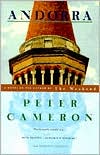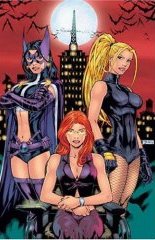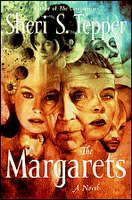 Of Men and Their Mothers by Mameve Medwed – “Medwed writes with clarity and humor, and even as Maisie’s life seems to falling apart around her, we never worry too much, because things always seem to work out for the best in a Medwed novel. But what makes her work so satisfying is that those happy endings are never cheap or unearned. Maisie works hard for her happy life, and we can do naught but cheer her on when she makes it.”
Of Men and Their Mothers by Mameve Medwed – “Medwed writes with clarity and humor, and even as Maisie’s life seems to falling apart around her, we never worry too much, because things always seem to work out for the best in a Medwed novel. But what makes her work so satisfying is that those happy endings are never cheap or unearned. Maisie works hard for her happy life, and we can do naught but cheer her on when she makes it.”
 Dust by Elizabeth Bear – “Bear is adept at writing big, complex sci fi sagas such as this. She also ignores convention with regard to sexuality and relationships, having her characters love come in varied forms. Bear is clearly talented, but some of she may be mixing in a few too many elements, cluttering her story to the point of distraction.”
Dust by Elizabeth Bear – “Bear is adept at writing big, complex sci fi sagas such as this. She also ignores convention with regard to sexuality and relationships, having her characters love come in varied forms. Bear is clearly talented, but some of she may be mixing in a few too many elements, cluttering her story to the point of distraction.”
 The Perfect Waiter by Alain Claude Sulzer – “There is a lot of restraint on display, and plenty of control just waiting to snap. Sulzer and his translator John Brownjohn do a great job with language to convey the conflicting desires simmering just under the surface of these characters.”
The Perfect Waiter by Alain Claude Sulzer – “There is a lot of restraint on display, and plenty of control just waiting to snap. Sulzer and his translator John Brownjohn do a great job with language to convey the conflicting desires simmering just under the surface of these characters.”
 The Art of Racing in the Rain by Garth Stein – “Garth writes the family relationships and the emotional scenes nicely, which is why so many people respond to the novel and why people are calling it a tear-jerker. While Enzo and Denny are bonded, my favorite part of the book was the way Enzo’s relationship with Eve develops. It’s tentative at first, yet grows into some of the most powerful moments in the novel.”
The Art of Racing in the Rain by Garth Stein – “Garth writes the family relationships and the emotional scenes nicely, which is why so many people respond to the novel and why people are calling it a tear-jerker. While Enzo and Denny are bonded, my favorite part of the book was the way Enzo’s relationship with Eve develops. It’s tentative at first, yet grows into some of the most powerful moments in the novel.”
 The House on Fortune Street by Margot Livesey – “Livesey has a strong sense of place (the book takes place in London, Edinburgh, and across the British countryside) and character, and weaves a powerfully emotional story as well. For adult drama, Livesey is master.”
The House on Fortune Street by Margot Livesey – “Livesey has a strong sense of place (the book takes place in London, Edinburgh, and across the British countryside) and character, and weaves a powerfully emotional story as well. For adult drama, Livesey is master.”
 Andorra by Peter Cameron – “Cameron has created a marvelous batch of eccentric characters around whom sadness seems to hover like a vapor. There are moments of brilliant honesty even as secrets are kept close to the heart, and moments of sublime revelation. Andorra makes an already sparkling body of work including The Weekend, The City of My Final Destination and Someday This Pain will be Useful to You shine even brighter.”
Andorra by Peter Cameron – “Cameron has created a marvelous batch of eccentric characters around whom sadness seems to hover like a vapor. There are moments of brilliant honesty even as secrets are kept close to the heart, and moments of sublime revelation. Andorra makes an already sparkling body of work including The Weekend, The City of My Final Destination and Someday This Pain will be Useful to You shine even brighter.”
 The Somnambulist by Jonathan Barnes – “Ultimately striving for a Neil Gaimanesque dark fantasy, The Somnambulist misses more than it hits, but judging from the first third of this tale, there’s some real talent there.”
The Somnambulist by Jonathan Barnes – “Ultimately striving for a Neil Gaimanesque dark fantasy, The Somnambulist misses more than it hits, but judging from the first third of this tale, there’s some real talent there.”
 The Thief Queen’s Daughter by Elizabeth Haydon – “Fantasy series have to work really hard to keep me engaged nowadays, and I’m pleased to say that Haydon’s The Lost Journals of Ven Polypheme has me hook, line and sinker.”
The Thief Queen’s Daughter by Elizabeth Haydon – “Fantasy series have to work really hard to keep me engaged nowadays, and I’m pleased to say that Haydon’s The Lost Journals of Ven Polypheme has me hook, line and sinker.”



